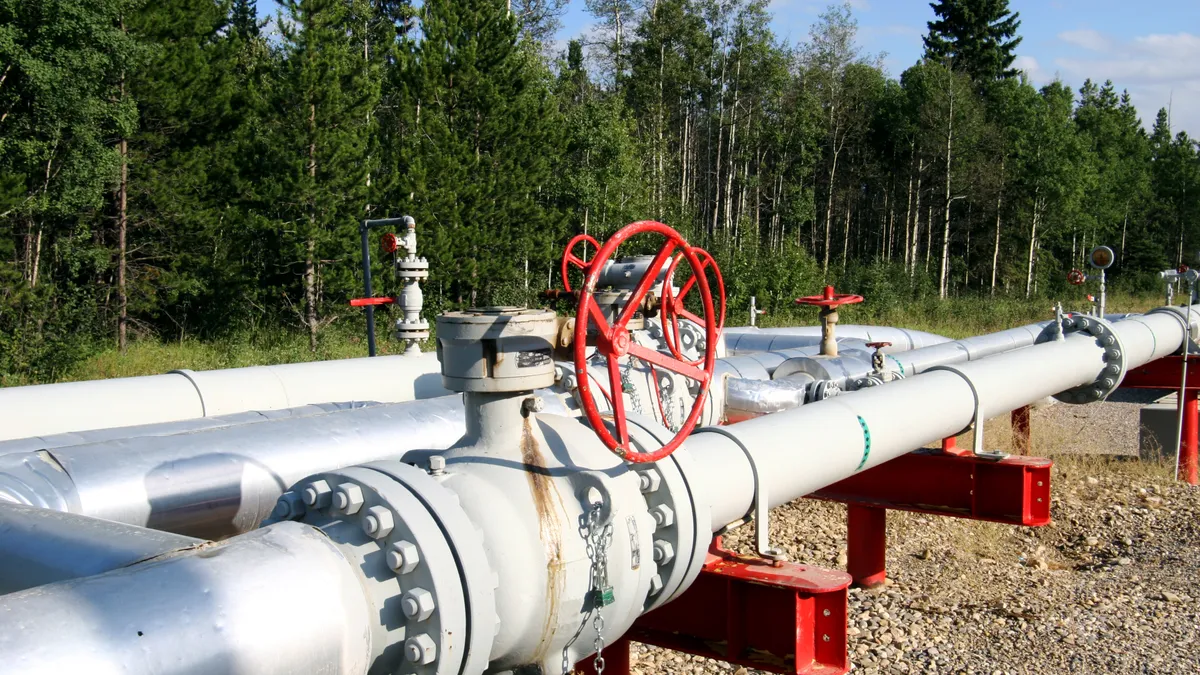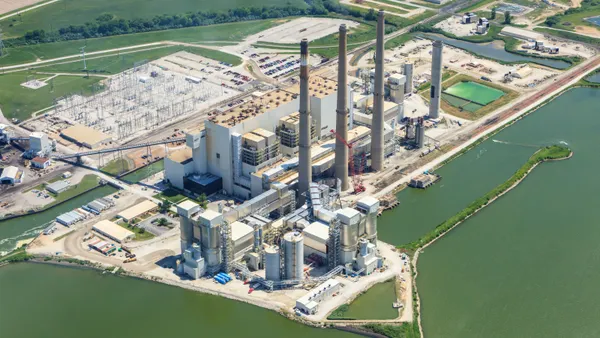Dive Brief:
- Four regional transmission organizations serving more than 40% of the U.S. population on Wednesday published a suite of recommendations to improve gas-electric sector coordination, with the aim of boosting the reliability of both energy delivery systems.
- The RTOs — Southwest Power Pool, Midcontinent Independent System Operator, PJM Interconnection and ISO New England — said reliability is “increasingly reliant on the inter-relationship between the electric markets and well-functioning gas markets as well as the availability of adequate natural gas infrastructure.” They sketched out 14 initiatives to bolster coordination between the sectors, including market improvements, enhancements to infrastructure operation and regulatory reforms.
- Gas-electric coordination has been a growing concern since Winter Storm Uri in February 2021, when some Texas electric companies cut power to gas facilities as part of their emergency conservation response. That reduced fuel supplies to gas-fired power plants, contributing to energy shortages and leading to calls to address the issue.
Dive Insight:
In the years since Winter Storm Uri there have already been improvements to cross-sector coordination, the RTOs said — pointing to improved generator performance during a pair of winter storms last month — but some issues persist nationally and others can be addressed regionally or by states.
“These more recent experiences underscore the value of better aligning both the purchase of commodity and delivery of natural gas,” according to the position paper. “If anything, these most recent positive experiences underscore the value of focusing on additional enhancements, building on the work of each of the regions, to better align these two industries.”
Addressing the potential for co-dependent infrastructure will require pipeline and other gas supply stakeholders to work with RTOs and electric distribution utilities “to ensure that there are redundant sources of power available to critical facilities,” according to the paper.
And because the conversion of compression stations and processing facilities to utilize electric power was driven partly driven by federal environmental permitting requirements, “closer coordination with federal and state environmental regulators is needed to address the co-dependency vulnerabilities,” the RTOs said.
Among the other coordination approaches suggested, the RTOs said they want to improve fuel scheduling flexibility and to see the development of “packages of firm transportation and storage and other pipeline services” to better meet changing electric system demands.
“There are significant differences in the level of scheduling flexibility available to generators to respond to RTO dispatch instructions, particularly during constrained system conditions,” they said, and the degree of pipeline scheduling flexibility is “heavily influenced by the degree of storage available on the system and the extent to which the pipeline is fully subscribed during peak conditions.”
Improvements to weekend and holiday gas trading can also assist power generators, the RTOs said.
The Federal Energy Regulatory Commission and state regulators should consider investigating opportunities to “enable an end to multiday trading requirements of natural gas over weekends and holidays that significantly strain natural gas/power coordination and dispatch,” the paper said.
The Natural Gas Supply Association, which represents gas producers, said it was reviewing the RTOs’ suggestions and its members “are committed to gas-electric coordination and ensuring reliability in the energy system.”
“While the gas industry did not have specific input to this paper, they should generally be aware that these concerns have been raised in the past,” a spokesperson for the New England grid operator said in an email.
There are multiple efforts underway to improve coordination between the gas and electric sectors.
In November, the National Association of Regulatory Utility Commissioners launched a 15-month effort to improve coordination by bringing together a group of state regulators and stakeholders. And in December, FERC and the North American Electric Reliability Corp. recommended the electric power and natural gas sectors should collaborate on a “blackstart system restoration plan” to bring the grid back online in the event of a widespread blackout.















